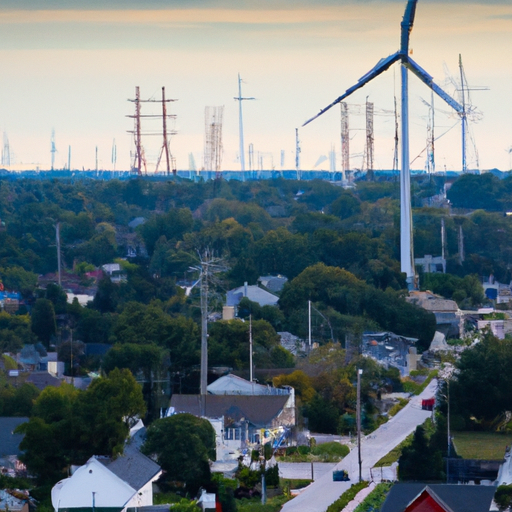Climate Week NYC is here, and with it comes a flurry of big promises and big dollars in the spotlight. While these initiatives are important, it’s crucial to remember that community-level action is where tangible progress is made. One such program that exemplifies this is the US Department of Energy’s Clean Energy to Communities (C2C) program. Through this program, the Department is bringing renewable energy to villages, towns, and cities across the US.
Focusing on Community-Level Programs
The US Department of Energy is known for its efforts in high-profile projects and partnerships, but it also runs community-level programs that often go under the radar. An excellent example of this is the ongoing community solar program, which aims to make solar energy more accessible and affordable for low- and middle-income households. Additionally, the Department has collaborated with various communities on projects such as solar installations for Black farmers and churches in Florida and a floating solar project in Cohoes, New York. These initiatives demonstrate the Department’s commitment to improving access to renewable energy at the local level.
The Clean Energy to Communities (C2C) Program
One key project under the C2C program involves the Alaska member-owned electric cooperative, Golden Valley Electric Association (GVEA). With the help of the National Renewable Energy Laboratory, the pilot project aims to transition Fairbanks and other communities in the region away from coal power, modernize their grid infrastructure, and mitigate skyrocketing energy costs. Currently heavily reliant on fossil energy, GVEA plans to replace a 50-megawatt coal power plant with clean energy from a new wind farm and energy storage facility. Renewable energy from the Bradley Lake hydropower project will also contribute to the transition, pending upgrades to transmission lines.
GVEA’s CEO, John Burns, explains that upgrading the transmission system will not only enable the integration of more renewables but also ensure grid resilience and redundancy. The project is crucial for the region’s hospitals, mines, and critical military bases, which heavily depend on reliable power.
A Little Goes a Long Way
While the C2C program may have a modest budget in comparison to other energy funding programs, its impact is significant. With $8 million in award funding and an additional $17 million in technical assistance, communities, local governments, and electric utilities will have the resources to research, model, and deploy clean energy systems that meet their specific needs. The Energy Department cites various C2C projects, ranging from a net zero transportation goal in Chicago to a green ammonia project in Sitka, Alaska, as examples of the program’s diverse impact. Additionally, the C2C program provides short-term technical assistance to over 50 communities in 25 states and Puerto Rico.
Promoting Collaboration and Peer Learning
The C2C initiative places great emphasis on collaboration and peer learning. Through peer learning cohorts, communities have the opportunity to collaborate for six months on clean energy strategies. The next cohort will focus on decarbonizing municipal buildings, supporting transportation electrification, and enhancing resiliency and security through solar power, energy storage, and microgrids. Applications for the next round of peer learning will open on September 18th, offering communities a chance to learn from one another and accelerate their clean energy transition.
Obstacles and Opposition
While the C2C program and other community-level initiatives work towards a sustainable energy future, some Republican officials in various states are actively obstructing ESG (environmental, social, governance) business goals for renewable energy projects. This opposition undermines the efforts of communities facing the immediate impacts of climate change. Despite evidence supporting the benefits of an ESG strategy, the anti-ESG agenda persists, with Republican-led House committees pushing for bills that hinder ESG investing.
It’s clear that the C2C program and other community-level efforts are critical in driving the clean energy transition forward. By empowering local communities, providing technical assistance, and fostering collaboration, the program aims to create a more sustainable and equitable energy future for all.
